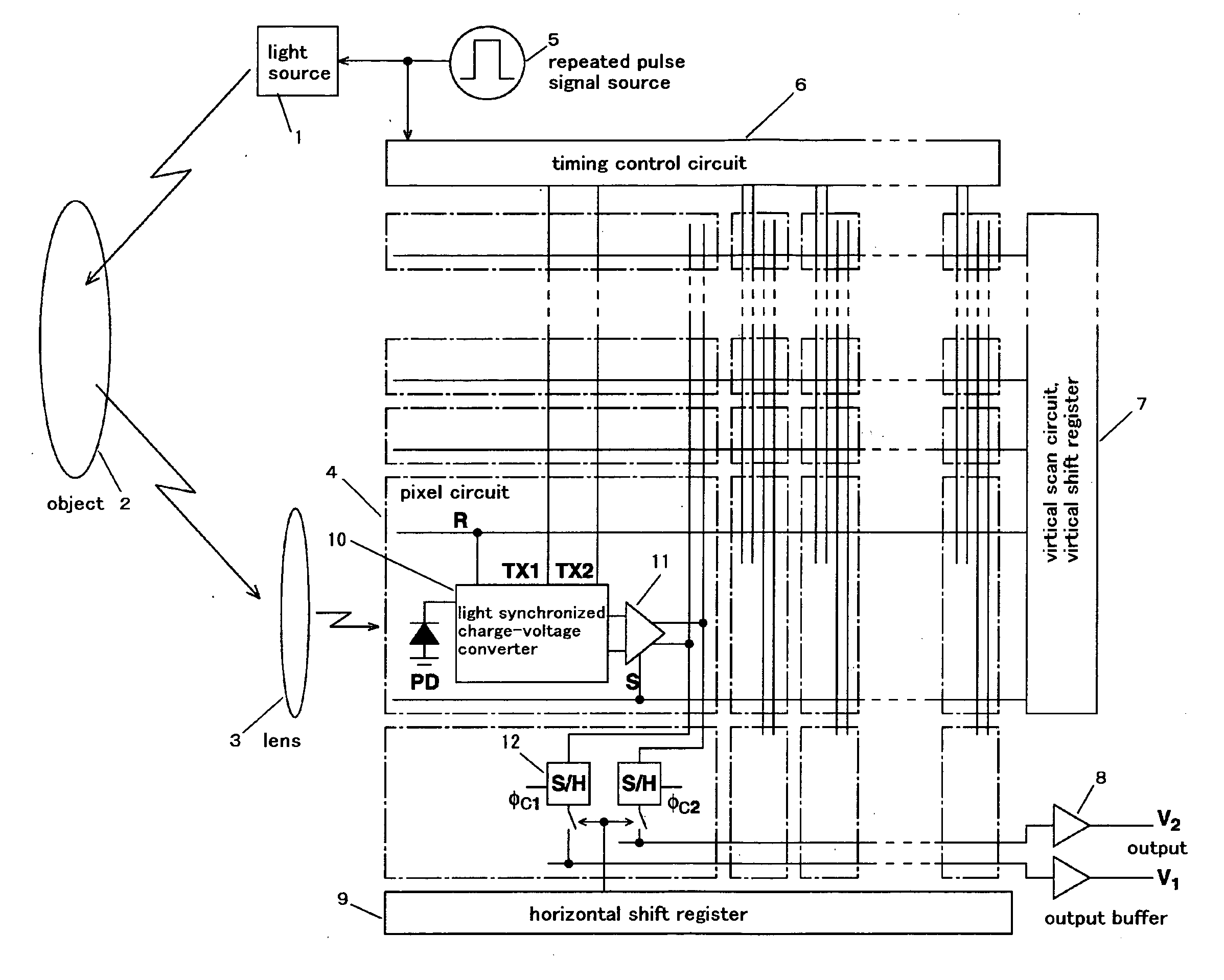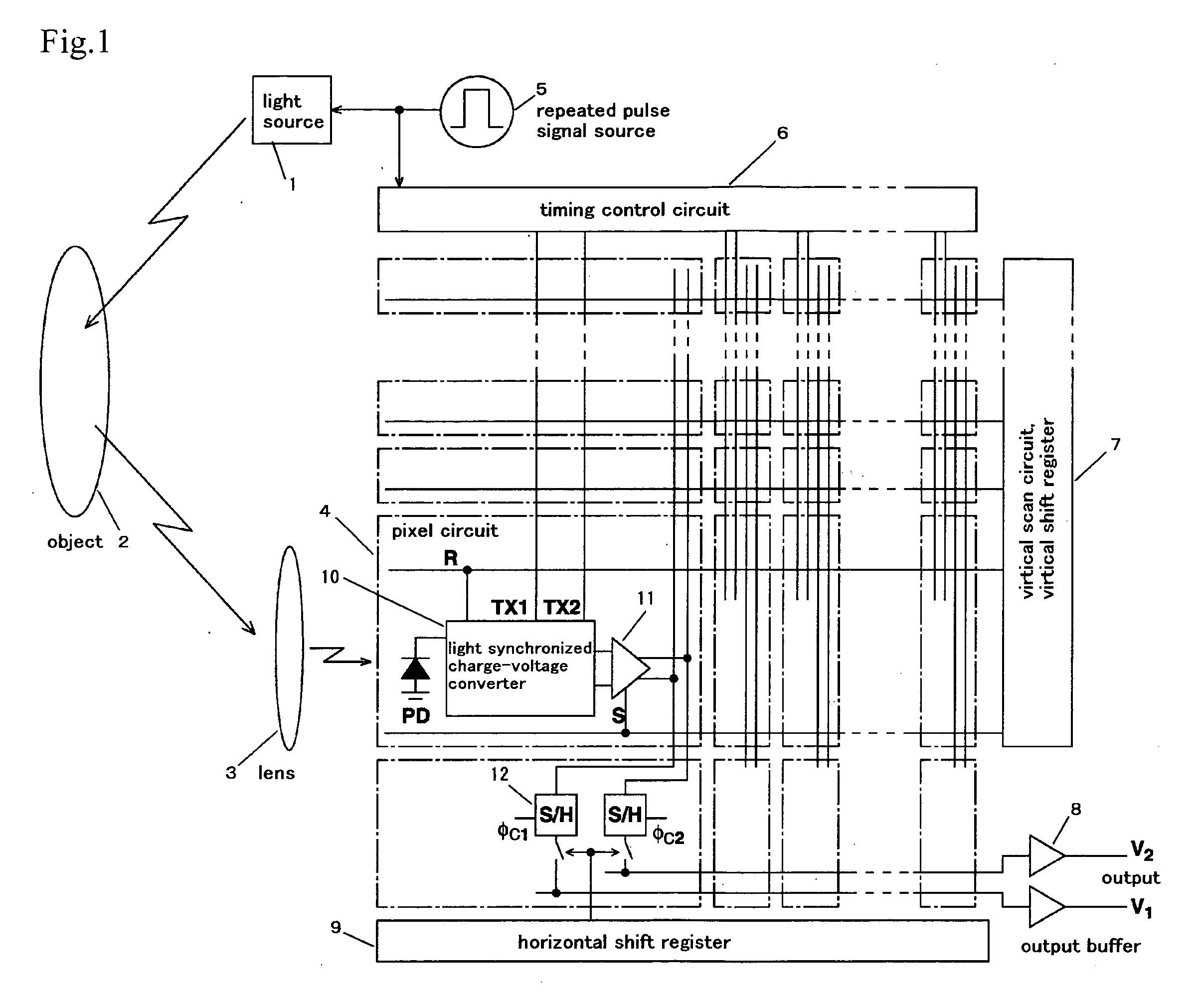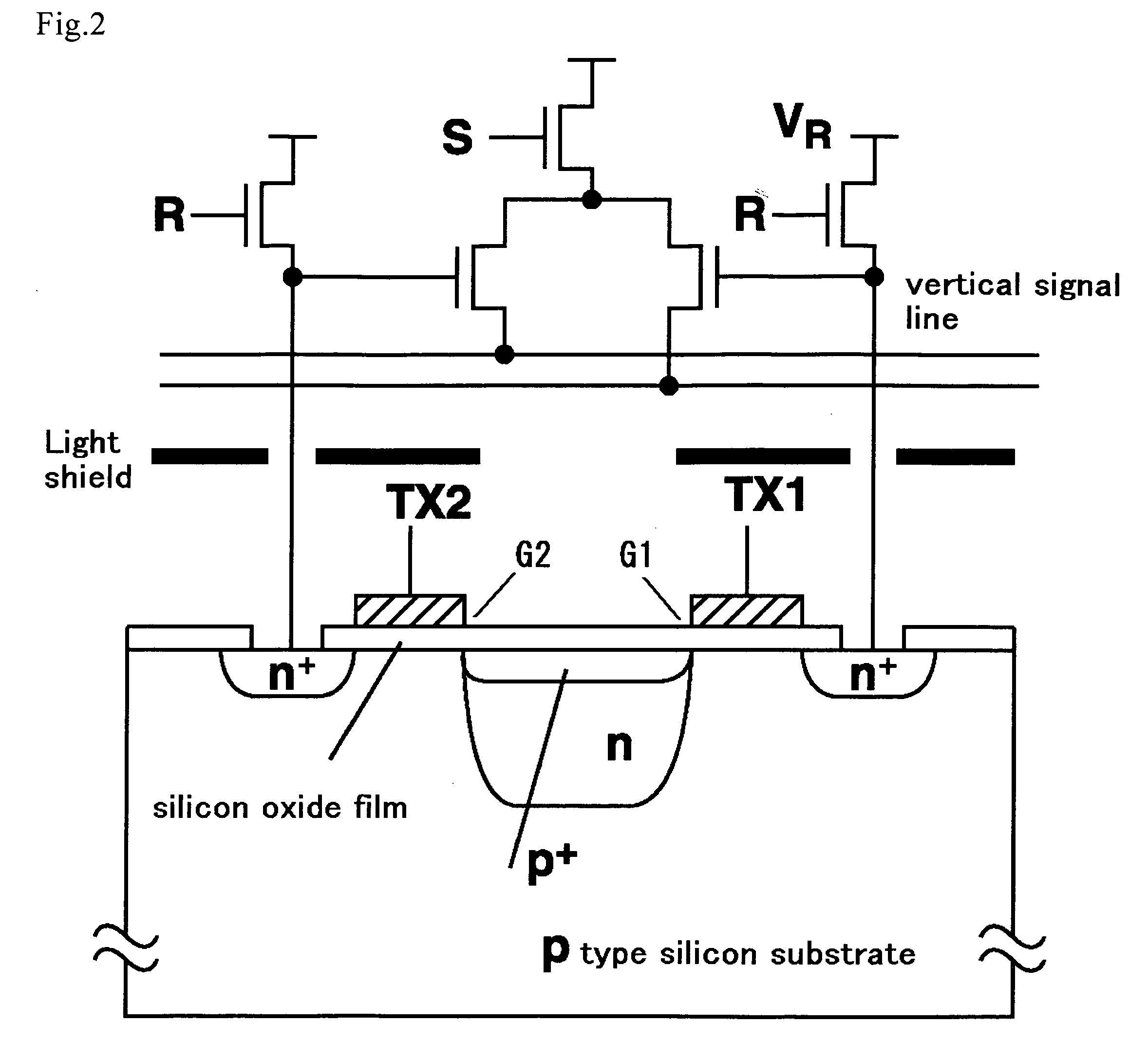Distance image sensor
a technology of distance image and sensor, which is applied in the direction of distance measurement, radiation control devices, instruments, etc., can solve the problems of low sensitivity, cost reduction, or complicated manufacturing steps
- Summary
- Abstract
- Description
- Claims
- Application Information
AI Technical Summary
Benefits of technology
Problems solved by technology
Method used
Image
Examples
Embodiment Construction
[0041] First the principle of measuring the time of flight of light while removing the background will be described using the case of the block diagram in FIG. 1 as the simplest example. This corresponds to the above mentioned principle (b). FIG. 2 is a diagram depicting the structure of each pixel, and FIG. 3 shows the equivalent circuit thereof. FIG. 4 is an operation timing chart in the circuit of each pixel. The cycle of acquiring an image at high-speed is assumed to be Th. This cycle is divided into the period Th L for projecting the pulse modulated light, and the period Th D for turning the modulated light OFF. In the period when the modulated light is projected, the light source is driven by a repeat pulse having a predetermined cycle, and emits light. This light is irradiated onto an object. The image by the reflected light thereof is formed on the distance image sensor via the lens.
[0042] Each pixel has a buried photo-diode, and the stored charges are alternately transferr...
PUM
 Login to View More
Login to View More Abstract
Description
Claims
Application Information
 Login to View More
Login to View More - R&D
- Intellectual Property
- Life Sciences
- Materials
- Tech Scout
- Unparalleled Data Quality
- Higher Quality Content
- 60% Fewer Hallucinations
Browse by: Latest US Patents, China's latest patents, Technical Efficacy Thesaurus, Application Domain, Technology Topic, Popular Technical Reports.
© 2025 PatSnap. All rights reserved.Legal|Privacy policy|Modern Slavery Act Transparency Statement|Sitemap|About US| Contact US: help@patsnap.com



